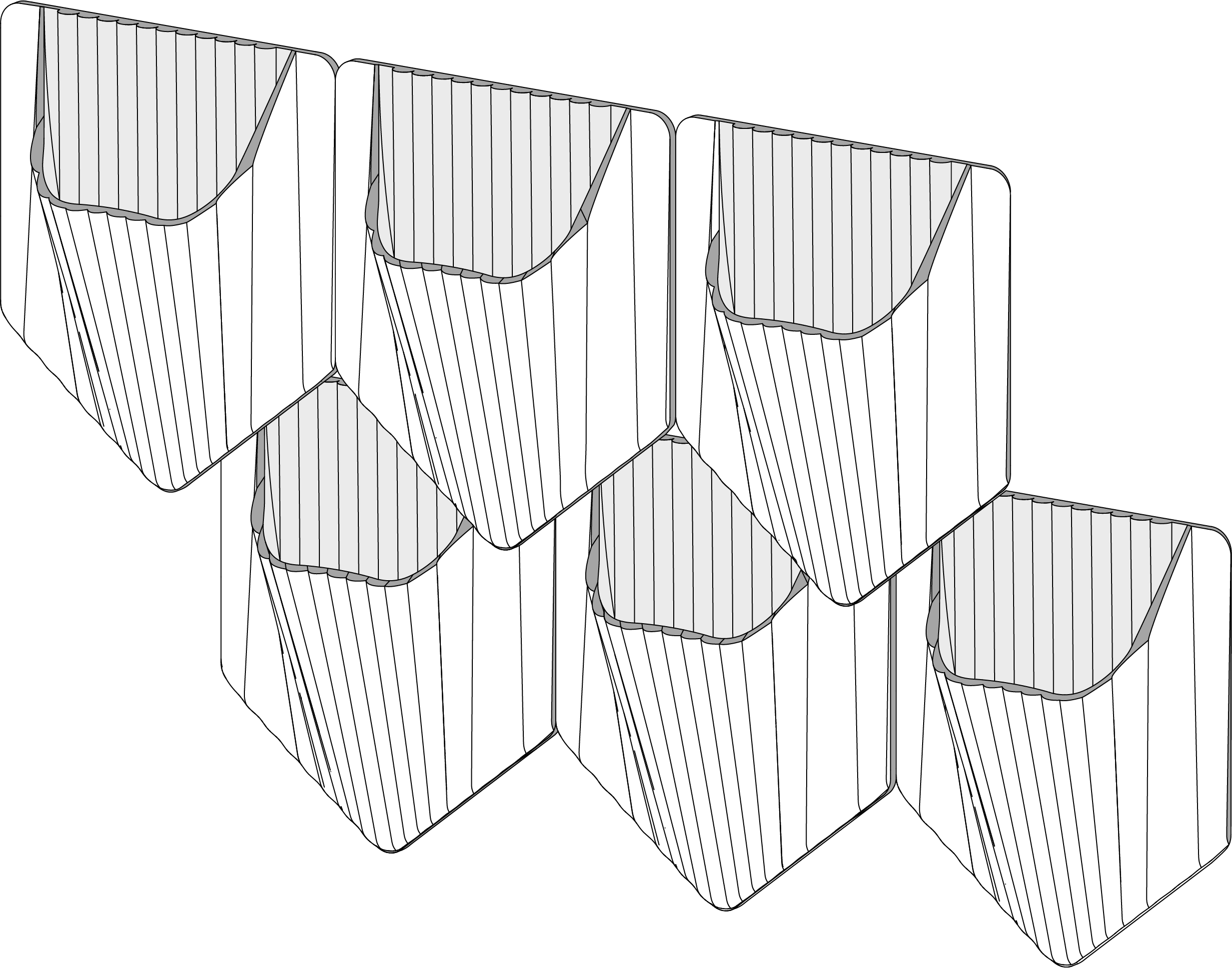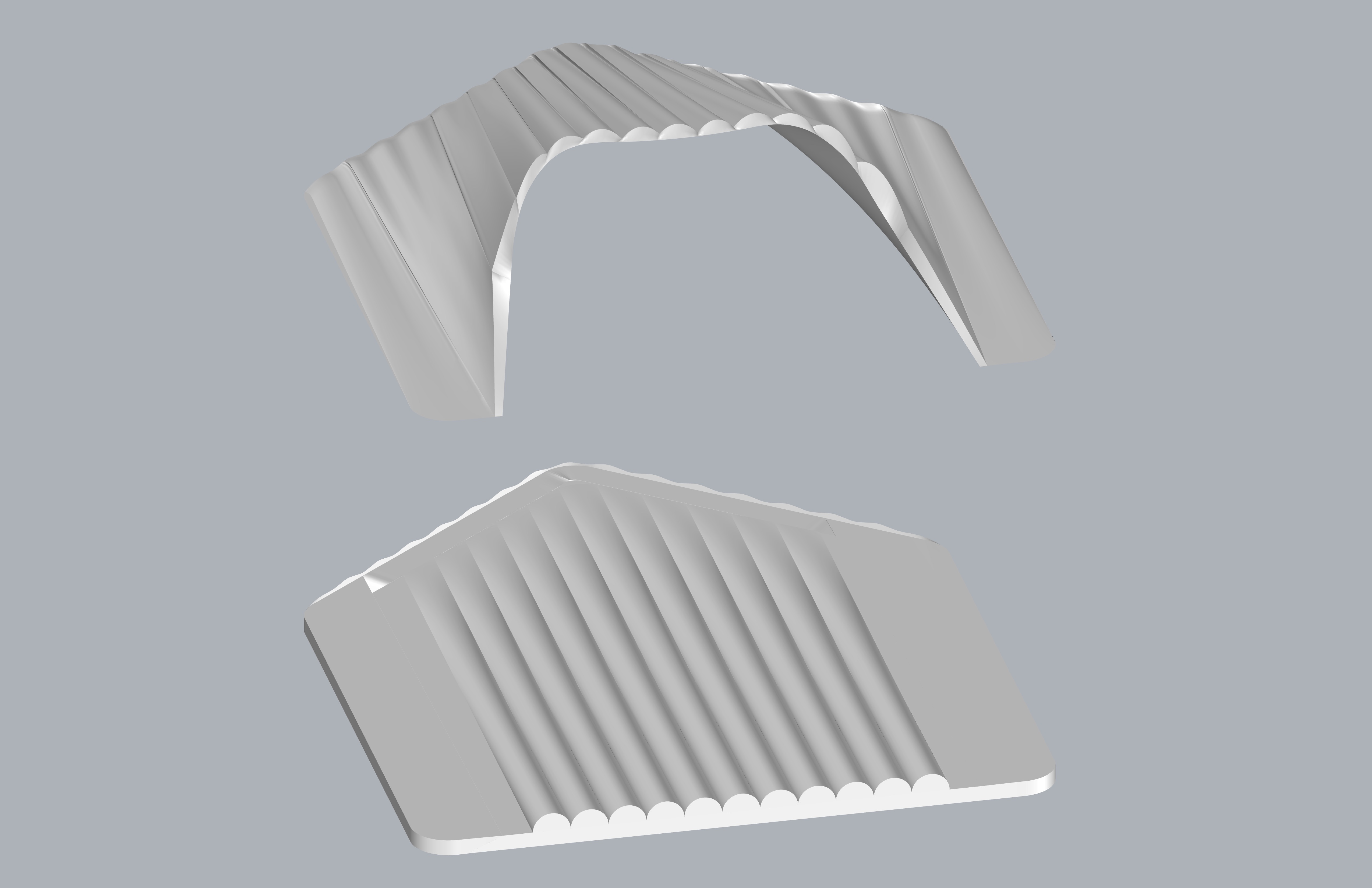At final review good feedback came in to further the design. In future iterations I’ll further split up the module to decouple the planter and the backplate. So instead of two pieces the whole module will be three pieces. It is worth considering the risk that dirt may be running down the planters long term, so alternatives to counter this or embrace it would be necessary for the planters success. I also plan to make a deeper pocket for the planter to allow larger plant life to exist inside of the module.
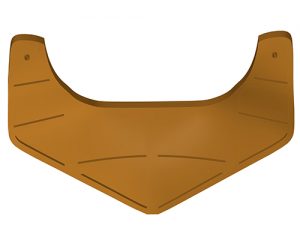

New mold that allows the two pieces to be ram pressed. The bottom plate is now elongated to give further spacing between each planter. Waffle grid spacing is placed on the back of each part.
The planter’s new developments include broader dimensions, a hexagonal backplate and holes for screws to fasten the two pieces together.
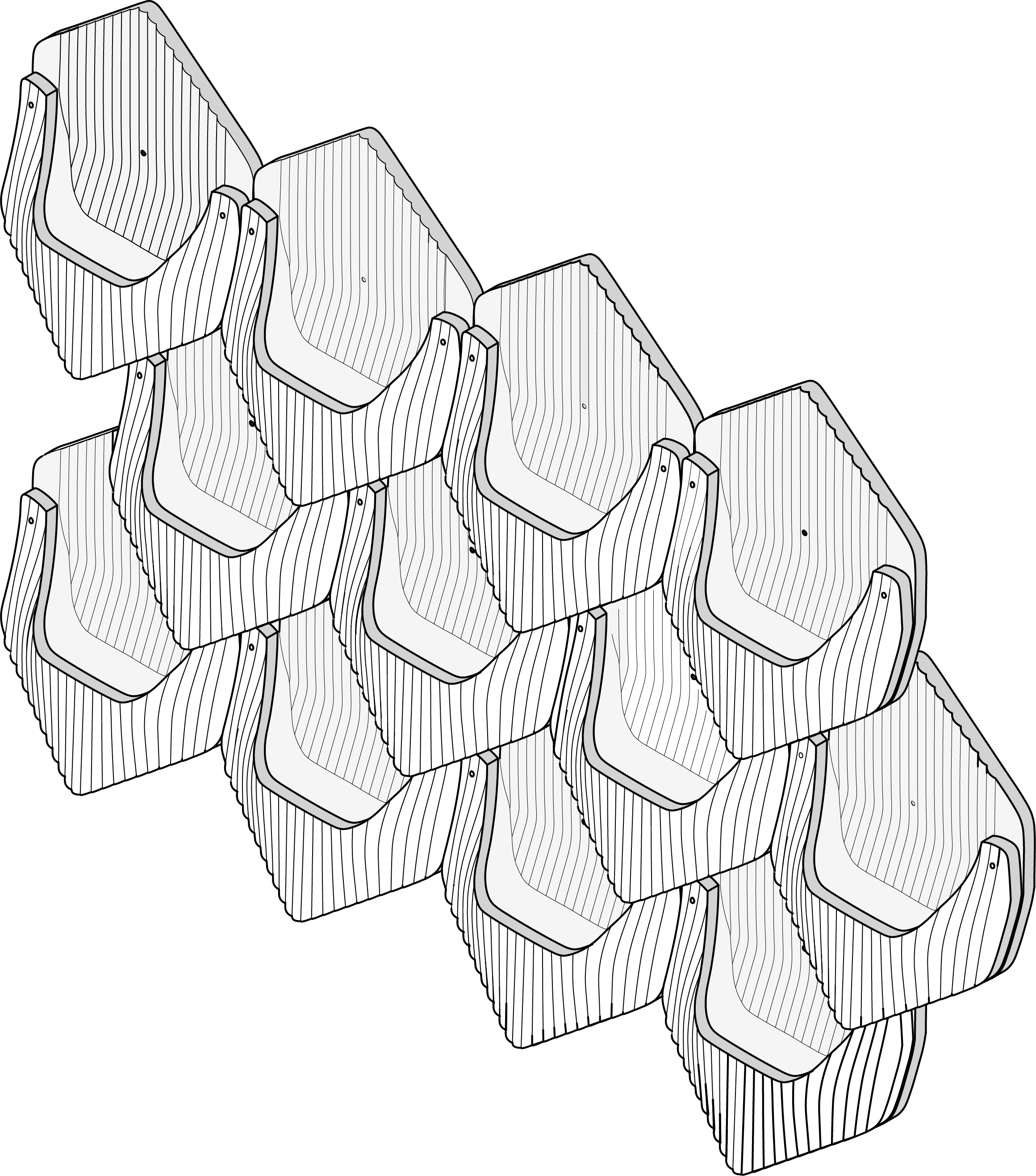

This week the planter was updated to include ridges and texturing as would be expected on the final product. The piece is a symmetrical pentagon although I’d consider other shape permutations such as slanting or skewing the geometry. The alternating arrangement of the modules on a wall system would allow maximized water retention between each unit since the ridges guide the precipitation and the planter is slanted forward to allow vegetation growth.

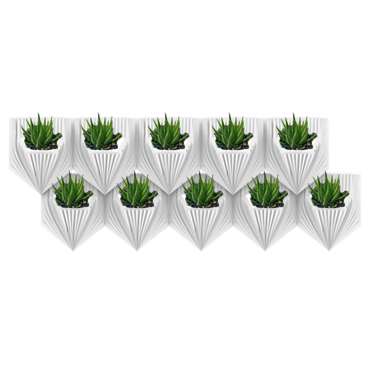
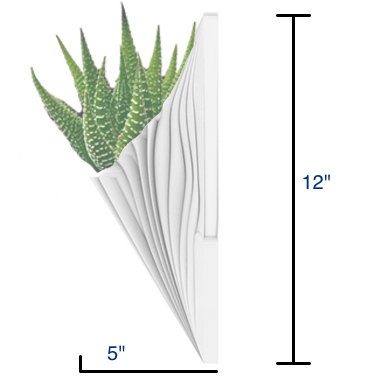
This week I further investigated the possibilities of using ceramic modules for waterfront resilience. As you can tell by the sketches my designs went on a tangent, applying the fins and potted plants from previous weeks onto a residential facade.
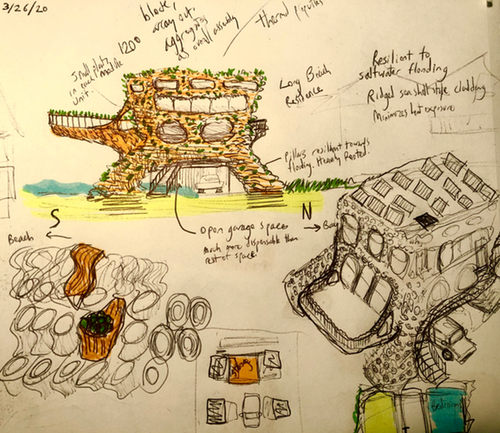

More closely related to our discussions last Tuesday I thought about how ceramic modules could form a sloped roof, where the modules could potentially create a self supporting structure.

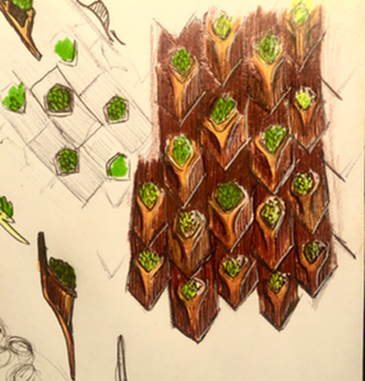
My most developed idea was creating a wall system out of plates with planters on them. As the design is elaborated there would be more complex ridges and curvature. The modules would overlap vertically in order to create a tighter seal, and pinches in towards the bottom to direct cascading water directly to a planter. Although I’m planning on adding more texture to the modules I do think it’s currently a bit too flat and the planter is not integrated enough. So I think there’s room for improvement.
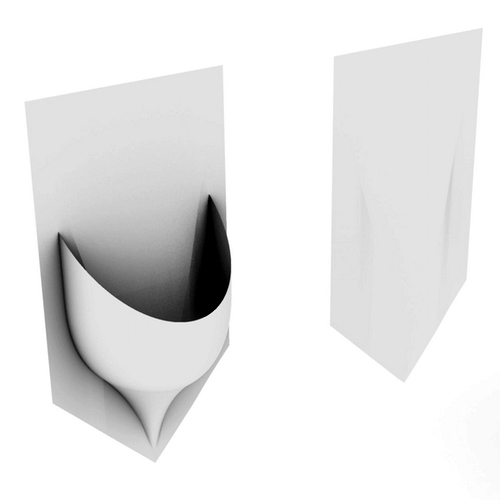
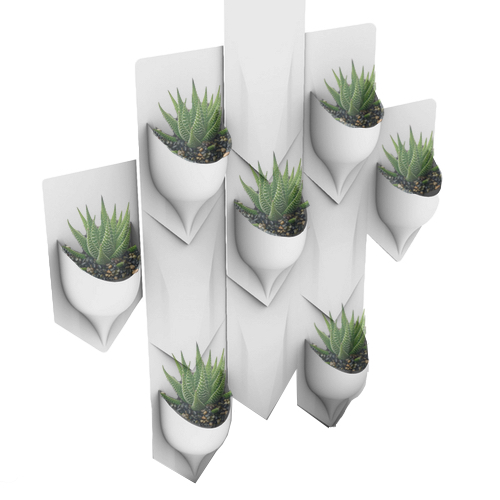

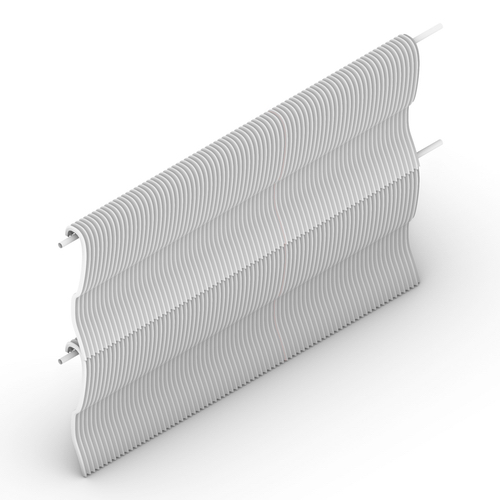
The module has been updated to include ridges similar to a sea shell. They hang from a rod with overlap to allow rainwater to cascade over each piece.



“Cabin of Curiosities” by Luminous was inspirational in its form of overlapping textured pieces which hang via a hook like connection. It also explores ideas I’ve played with such as creating modules with plant carrying capacities.
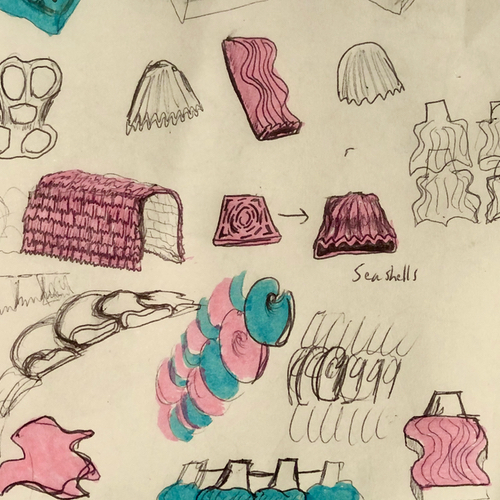
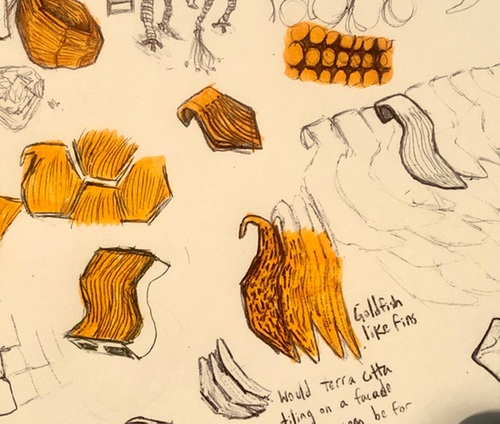
Sketches reflecting on the move to make designs based off sea creatures such as clams, snails and goldfish. These forms curve and produce ridges naturally which mitigates sun exposure as well as producing other cooling effects.

This week I updated my leading forms to be pentagonal. In my physical modeling I gave alternate strategies of capture via scored pieces. Some of these ranged from traditional looking ornamental tile, with symmetrical dimensions. Another strategy I explored was giving large and small form holes akin to that of a sponge. This poses a question as to what is the purpose of a building facade being a sponge? Can this be to capture water and nutrients in wetter environments? Is it just sun deflection? So the idea of collecting nutrients and letting microbial life thrive on tile made me think of aquatic application. I did research on locations such as great barrier reef to read about the mixed reception artificial coral gets from experts. However, I do feel like creating an underwater sculpture could be a proper use of the material. A sponge-like piece may be heavier and more dense but there’s also possibilities of thinner more open modules which may invite the growth of longer plant life.

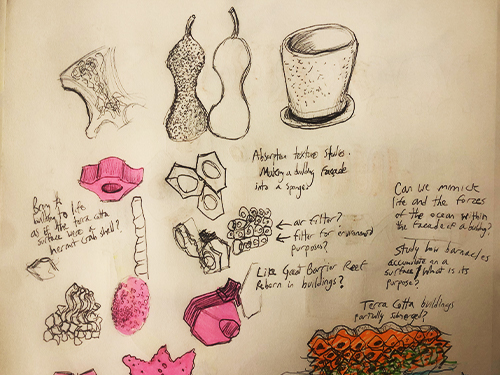
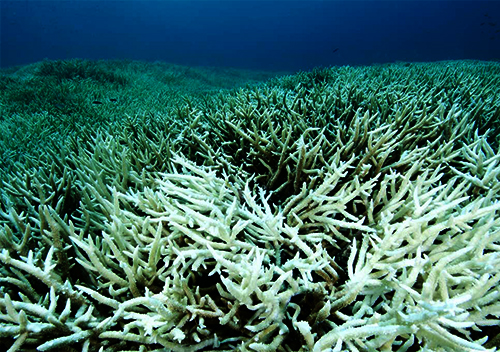
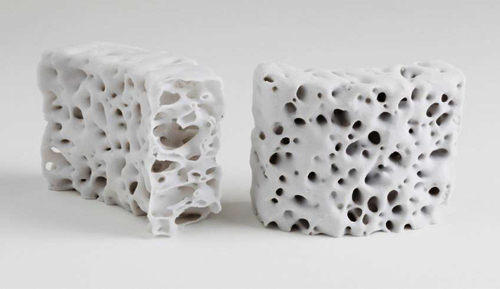
Sponge-like ceramic pieces developed by students at Cornell.
